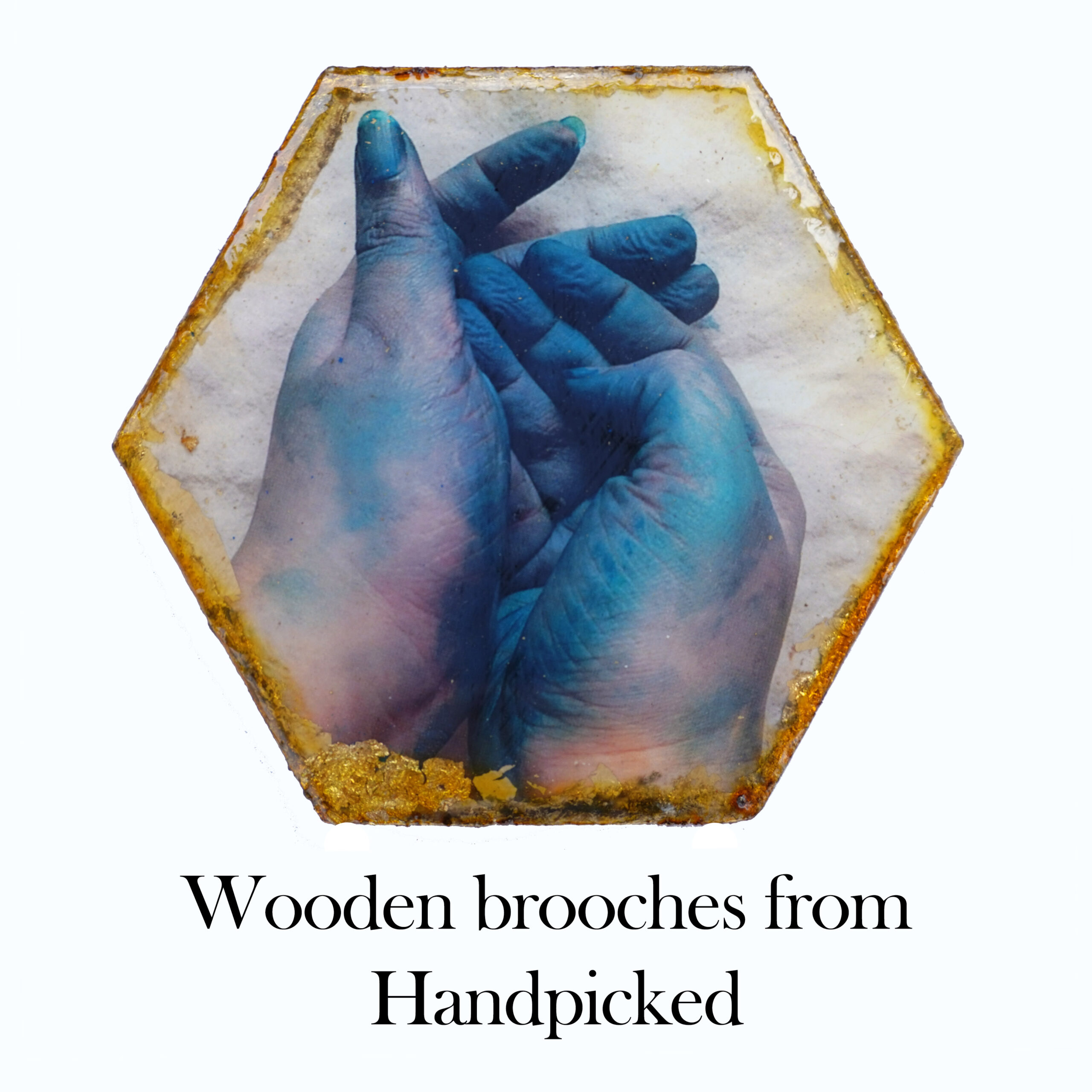I fell in love with jewellery as a kid. While I wanted to study jewellery design, I settled for Fashion design due to family constraints. However, jewellery often found me, in one way or the other. During my first year, we had to make a presentation on any fashion component or accessory. I went to the library and randomly pulled out a book. It was a book on brooches. From the enamelled Art Nouveau brooches by Henri and Paul Vever to the whimsical metal and plastic ones by Schiaparelli, they all inspired me. I had the opportunity to see several of them at the MAD Paris Museum. While I no longer have that presentation, I have several images, a collage of which you see below. Though I have been meaning to make brooches for several years, it was only recently I made them. There are a few in “Jewelry in Narratives” and a few wooden brooches in Handpicked exhibition. Before I show the recent ones, here is a little background on brooches.

A brief history of brooches
Brooches were originally used as functional items to fasten clothing, such as cloaks and shawls. The ancient Greeks wore fibulas to fasten their chiton and chlamys. Roman women used pins to keep their stola and palla in place. The Celts and the Vikings used them to fasten their cloaks. In the Middle Ages, brooches were often used as a symbol of social status and were made from materials such as gold, silver, and precious gems. During the Renaissance, brooches became more ornate and were often set with gemstones. They decorated clothing and other items, such as bags and hats.
In the Victorian era, Cameo brooches made up of agate, carnelian and glass cameos were prized. Brooches made of jet were popular as mourning jewellery. Sometimes, the hair of the deceased was braided and set in a case to be worn as a brooch.
Fake or Fine
Copies of brooches worn by royalty were often made from base metals like brass and copper and were adorned with glass or plastic stones. These types of brooches were relatively inexpensive and were often mass-produced, making them accessible to a wider range of people. This gave rise to the idea of jewellery made up of inexpensive materials as “Fake jewellery” as opposed to gold and silver set with gemstones as “Fine jewellery.” These are ideas that plague the jewellery world even today.

Brooches in the 20th century
The Art Nouveau influence saw brooches in gold or gold plating drippling with enamel and pearls. In the 20’s and 30’s, brooches were the “IT” costume jewellery in the 20th century, as they were an affordable and fashionable way to accessorise everyday outfits. Since they were made using materials such as resins, industrial plastics (bakelite, galalith, etc) they were often colourful and highly decorative. Diamantes (rhinestones) set in silver-tone and gold-tone alloys were commonplace. There were several fashion designers in 20th century such as Coco Chanel, Elsa Schiaparelli, Christian Dior, and Pierre Cardin who made brooches fashionable.

Wooden brooches from Handpicked
Wooden brooches are versatile. They lend themselves well to laser cutting, etching and handpainting. Hence their popularity as curios and even personal statements. While working on Handpicked, I wanted to capitalise on the light weight of laser cut wood and make large statement making brooches. The Wooden brooches from Handpicked are handpainted, have a photo print of hands and are sealed with resin. They can also be worn as pendants.
I have several shapes and sizes of brooches in Handpicked. You can see three of them on this page. The pentagonal votive like brooches are the biggest (and longest around 17cm). Then there are the rounds, a via assorted shaped such as a curved window, hexagon and a solid round with a smooth edge or shaped edges. Many of them are available for sale. Please write to me if you are interested in them.
Wishing you all a very merry Christmas and the best of season’s greetings!!
I hope you find it interesting
Cheers



What do you think?